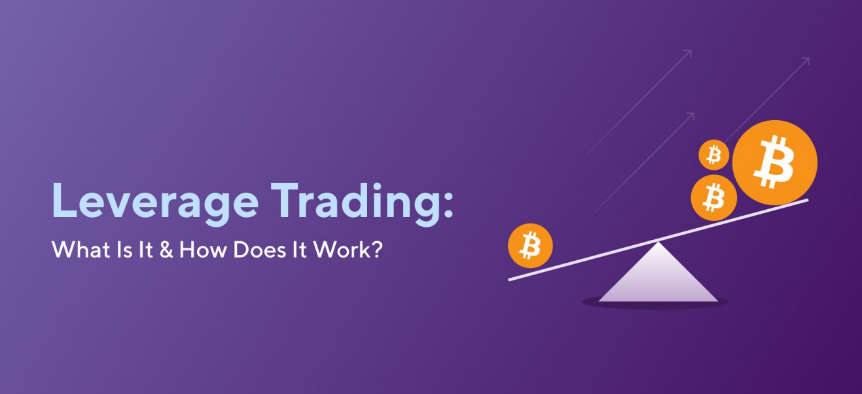
What is Leverage Trading?
Leveraged trading is when you borrow more money to raise the size of your investment on any market. It's comparable to taking out a loan from an exchange and then instantly raising your balance.
Only the fact that it incorporates cryptocurrencies makes leveraged trading in cryptocurrencies different from typical market leverage. Users can often increase the amount of their positions in large-cap alternative coins like Bitcoin (BTC) and Ether on leveraged trading platforms (ETH).
It is crucial for everyone with a leveraged position in cryptocurrencies to think that the digital asset will increase or decrease over a specific period of time. If the deal is profitable, leverage will significantly increase returns, but it can also have very negative effects if it fails. The trader runs the risk of losing all of their money if the price of a digital asset moves in the opposite direction of their initial wager.
How to Leverage Crypto?

To match the level of risk they are comfortable with, traders can leverage their bitcoin trading in a variety of ways. Although loans are a necessary part of bitcoin leveraged trading, the maximum amount a trader can borrow varies depending on the BTC exchange.
Leverage can be expressed as a ratio. One tenth of leverage, for instance, will multiply a bitcoin stake by ten. The fact that some cryptocurrency exchanges allow for leveraged positions up to 1100 is important to note.
You begin by making a deposit into your trading account.
To keep a leveraged position on several cryptocurrency exchanges, you must add margin to your account. To keep your leveraged position in place, you need margin in your account. If the margin requirement does not satisfy the agreed terms during the transaction, the cryptocurrency exchange may lawfully seize the collateral (or liquidate your account).
What Are the Risks?
Leveraged cryptocurrency trading may not appear to carry a significant amount of risk, but it is not suitable for those who cannot afford to take chances. Avoid leveraged trading in cryptocurrencies if you wish to use a passive long-term investment plan. The long-term holders of coins are not the target market for this trading tool.
Leverage significantly raises the risks involved with cryptocurrency. They are already regarded as one of the riskiest asset classes because of their volatility. Compared to buying tokens on the open market, leveraged trading is also much more likely to result in a total loss of money.
Any cryptocurrency's value can fall to zero, but if a token changes value by even a small amount, a leveraged trader risks losing their entire investment. If the price of BTC declines by 20%, a leveraged trader who is long it could lose all of their money.
A cryptocurrency exchange will remove your collateral if your account does not have the necessary margin.
The cryptocurrency exchange should send you an email or a push notification if you are about to trigger a margin call.
You can increase your account's collateral to prevent liquidation. Your margin requirement will increase with more collateral, which might give you more breathing room while you wait for your trades to come in.

Despite the hazards that come with trading leveraged cryptocurrencies, traders can develop their risk management abilities by figuring out how much they stand to lose.
Calculate the risk/reward ratio for a cryptocurrency trader. Consider your margin requirements, the amount you intend to gain from the position, and the amount you are willing to lose when determining the price that will cause liquidation.
Leveraged traders can establish take profit and stop loss limits on their trading accounts after deciding on these price targets. Take-profit and stop-loss orders will instantly close the leveraged position at a pre-specified price. The only distinction is that take-profit orders sell positions at a profit while stop-loss orders sell positions at a loss.





